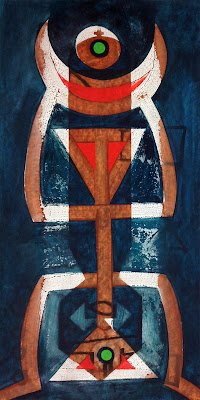 |
| KIRC Staff Drone Selfie |
With limited manpower, funding and other resources, drone technology is quickly proving to be a valuable tool to assist in the KIRC's mission to restore and protect precious Kahoʻolawe natural and cultural resources.
A unique partnership with Alu Like Inc. — whose mission is to kōkua Hawaiian Natives who are committed to achieving their potential for themselves, their families and communities — is now supporting career and technical educational (CTE) training for college interns that will become the next generation of Kahoʻolawe caretakers. Through a CTE grant award that we have entitled Hui Kāpehe (hui: association, institution, organization, joint ownership, partnership, team. kā.pehe: fellow worker, associate, assistant), KIRC staff are able to partake in professional development courses in order to certify Hui Kāpehe interns in CTE subjects.
KIRC Ocean Program Manager Dean Tokishi and GIS/LAN Specialist Carmela Noneza recently completed a two-week intensive instructor course in Anchorage, Alaska, enabling them to offer Unmanned Aerial System (UAS) Certification & Best Practices Curriculum in the Hui Kāpehe curriculum. Endorsed by the Alaska Airmen Association, a collaboration between industry professionals, teachers and instructional designers from Alaska Aerial Education, has equipped Dean and Carmela to train others for the FAA Remote Pilot Exam and to become competitive professionals in the field of UAS.
"If I didn't have this opportunity with Hui Kāpehe, I would not be able to do this training on my own — I would not have the focus or the funds," says intern Mel Kekahuna. Mel is now doing drone work with a local canoe tour company, offering the experience of how ancient Hawaiians traveled and capturing that for others.
To date, eight interns have completed the course, four have taken their FAA exam and those remaining are lined up to sit for the exam at the Oʻahu testing center.
"Drone use opens up entirely new perspectives for ecological research and environmental protection," notes Carmela, "For example, drones are already being used for mapping hard-to-reach areas or for the inventory of endangered animal species. Other areas in the world have experimented with the idea of seed bombing or aerial reforestation wherein seeds are being dropped from a flying drone."
 |
| Kanaloa Hardpan: Early 1990's |
 |
| Kanaloa Hardpan: Early 2010's |
She goes on to share that drones have seldom been used to map marine ecosystems, however, its bird’s-eye-view offers great advantages. Image data can be captured for a large surface area of a coral reef with its structural characteristics where divers would otherwise have to spend days collecting data underwater.
The KIRC's training course is an online/ hands-on hybrid, comprised of an open-source learning management system and practical assessments designed to ensure that participants are able to progressively build upon their knowledge base and skillsets. The two-week course is spread over a period of a few months to allow for group scheduling and to give students time to complete their lessons.
Apply for Hui Kāpehe at kahoolawe.hawaii.gov/opportunities.shtml.
Read other articles like this one at http://www.kahoolawe.hawaii.gov/newsletter.shtml



















































